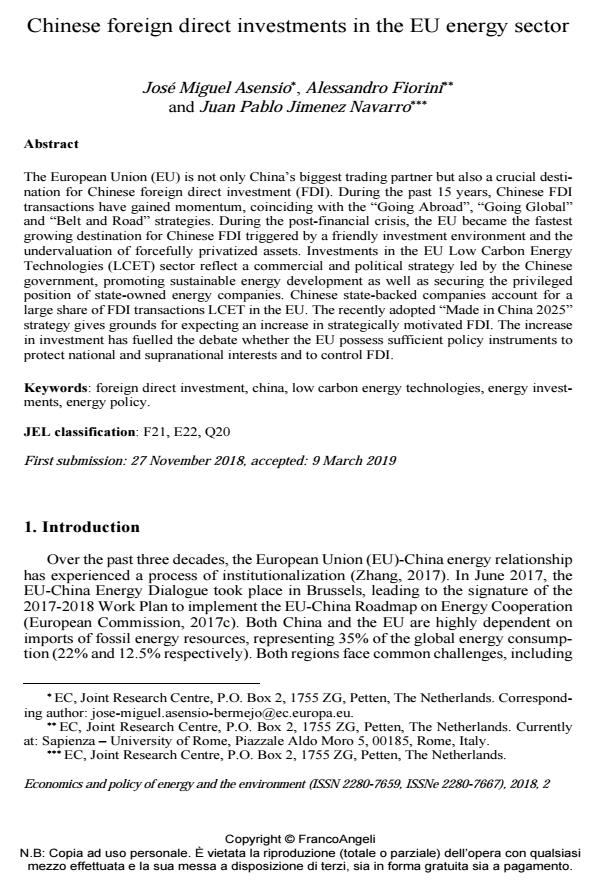Chinese foreign direct investments in the EU energy sector
Titolo Rivista ECONOMICS AND POLICY OF ENERGY AND THE ENVIRONMENT
Autori/Curatori José Miguel Asensio, Alessandro Fiorini, Juan Pablo Jimenez Navarro
Anno di pubblicazione 2019 Fascicolo 2018/2
Lingua Inglese Numero pagine 23 P. 207-229 Dimensione file 623 KB
DOI 10.3280/EFE2018-002011
Il DOI è il codice a barre della proprietà intellettuale: per saperne di più
clicca qui
Qui sotto puoi vedere in anteprima la prima pagina di questo articolo.
Se questo articolo ti interessa, lo puoi acquistare (e scaricare in formato pdf) seguendo le facili indicazioni per acquistare il download credit. Acquista Download Credits per scaricare questo Articolo in formato PDF

FrancoAngeli è membro della Publishers International Linking Association, Inc (PILA)associazione indipendente e non profit per facilitare (attraverso i servizi tecnologici implementati da CrossRef.org) l’accesso degli studiosi ai contenuti digitali nelle pubblicazioni professionali e scientifiche
The European Union (EU) is not only China’s biggest trading partner but also a crucial destination for Chinese foreign direct investment (FDI). During the past 15 years, Chinese FDI transactions have gained momentum, coinciding with the "Going Abroad", "Going Global" and "Belt and Road" strategies. During the post-financial crisis, the EU became the fastest growing destination for Chinese FDI triggered by a friendly investment environment and the undervaluation of forcefully privatized assets. Investments in the EU Low Carbon Energy Technologies (LCET) sector reflect a commercial and political strategy led by the Chinese government, promoting sustainable energy development as well as securing the privileged position of state-owned energy companies. Chinese state-backed companies account for a large share of FDI transactions LCET in the EU. The recently adopted "Made in China 2025" strategy gives grounds for expecting an increase in strategically motivated FDI. The increase in investment has fuelled the debate whether the EU possess sufficient policy instruments to protect national and supranational interests and to control FDI.
Parole chiave:Foreign direct investment, china, low carbon energy technologies, energy investments, energy policy.
Jel codes:F21, E22, Q20
- Handbook of Smart Energy Systems Marina Alonso Villota, Etienne Willkomm, Stefan Pickl, pp.2329 (ISBN:978-3-030-97939-3)
- Handbook of Smart Energy Systems Marina Alonso Villota, Etienne Willkomm, Stefan Pickl, pp.1 (ISBN:978-3-030-72322-4)
José Miguel Asensio, Alessandro Fiorini, Juan Pablo Jimenez Navarro, Chinese foreign direct investments in the EU energy sector in "ECONOMICS AND POLICY OF ENERGY AND THE ENVIRONMENT" 2/2018, pp 207-229, DOI: 10.3280/EFE2018-002011